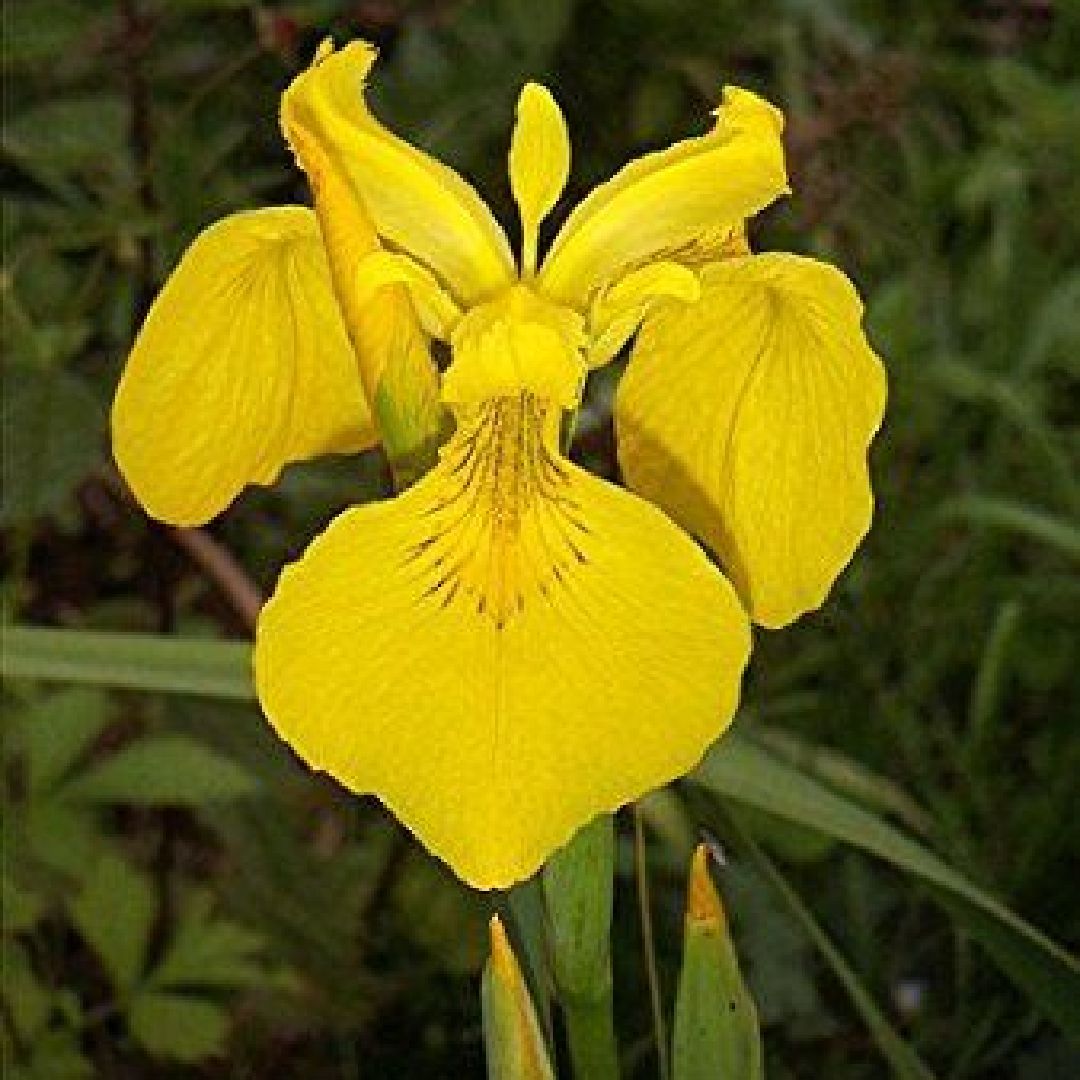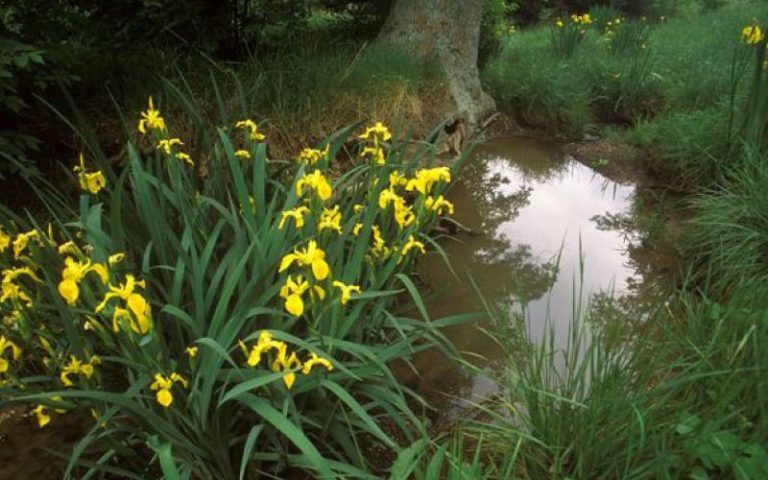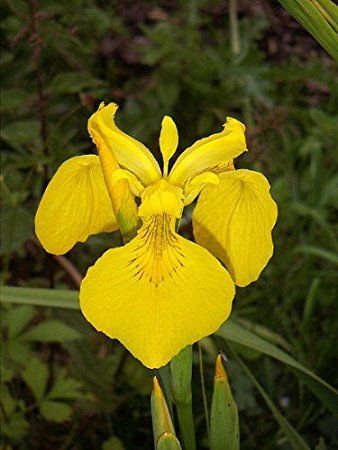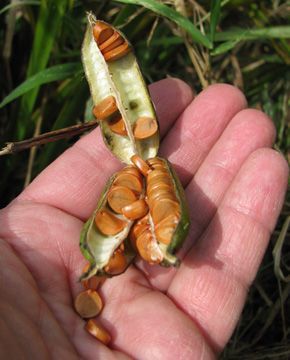Yellow Iris
(Iris pseudacorus)

Where is Yellow Iris (YI) from and how did it get here?
Yellow iris (also known as yellow flag iris, water flag, or pale yellow iris) is native to Europe, western Asia, and North Africa. It was introduced to North America as an ornamental plant for ponds and water gardens. It was once widely planted in wastewater ponds.
How do I identify YI?
YI is most easily identified when flowering. It is the only yellow-colored iris flower. Each yellow flower has three drooping petals surrounding smaller upright petals. It blooms April-July.
When YI is not flowering, it is very easily mistaken for blue flag iris (native) or cattails. Blue iris tends to be a smaller plant. You can also look at the seed pods. YI pods are 3 sided and angular. If you break the pod open, it has 6 chambers with rows of seeds.
Please contact our Woods and Water Team if you think you have found YI.
How does YI affect Wisconsin water bodies?
YI forms very dense mats of rhizomes and dead leaves that displace native plant species. YI can also decrease available water in a wetland, turning the wetland into a drier environment, and disrupting water flow. Yellow iris is poisonous to humans and animals if eaten, and its sap can cause skin irritation.
What can be done once YI enters a water body?
Small populations of YI can be manually removed. Be sure to wear gloves and long sleeves, as the sap of the plant may cause skin irritation. All parts of the plants must be removed, especially rhizomes. Cutting flower heads may help prevent the plants from spreading as quickly. Aquatic herbicides may be effective at removing YI, but a permit would likely be required.
additional resources
Manitowish Waters Lakes Association
Wisconsin DNR Aquatic Invasive Species
Great Lakes Indian Fish & Wildlife Commission (GLIFWC) Invasive Species Area Maps
books (available for loan)
Lake Plants You Should Know- A Visual Field Guide, University of Wisconsin- Extension
Aquatic Plants of the Upper Midwest- A Photographic Field Guide To Our Underwater Forests, Paul Skawinski
Through the Looking Glass- A Field Guide to Aquatic Plants, Susan Borman, Robert Korth, and Jo Temte.
Saving Our Lakes and Streams, James A. Brakken





